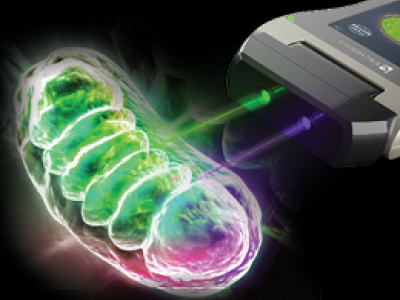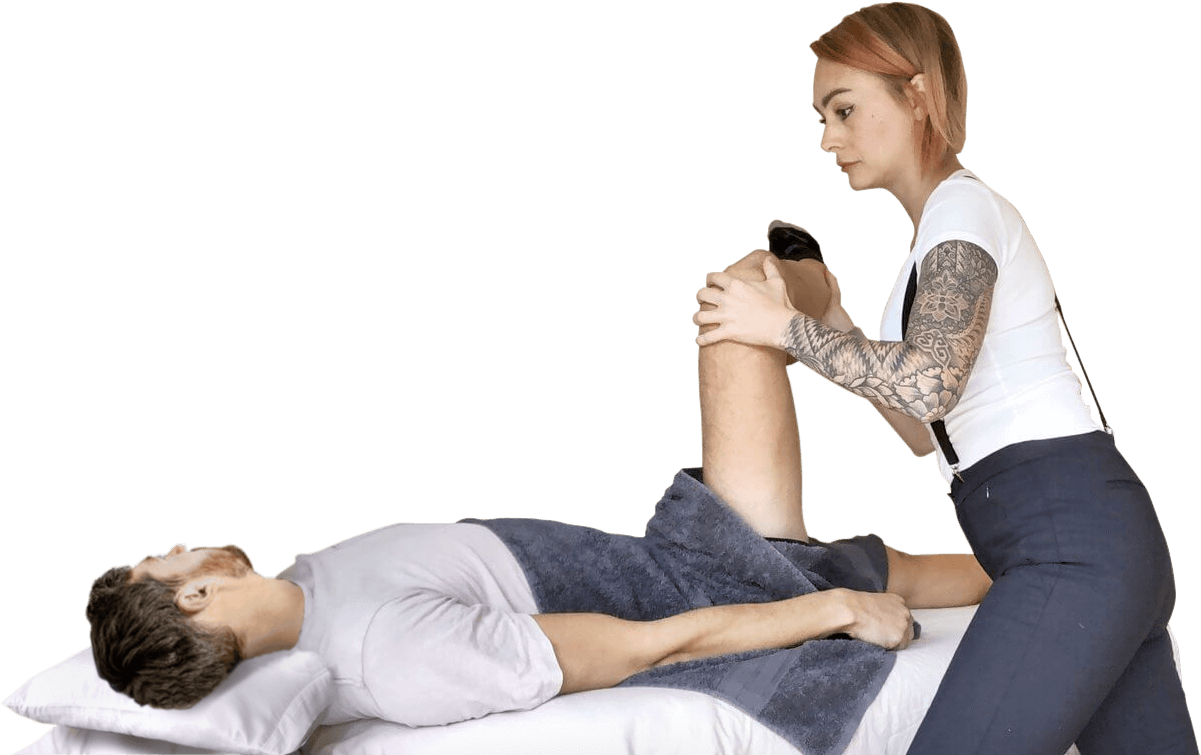
Tailored care that gets your body working well again
Whole body and well-being approach - not just ‘tune ups’
Practical exercises to help with your recovery in between appointments
Experienced with neuro-rehabilitation and chiropractic for kids
Does your back feel "out"?
Do you get headaches or pain that never lets up?
You may have been to doctors and specialists without answers - or you are visiting us directly. You don’t need a referral, but some patients are referred by their GP, personal trainer or other practitioners.
It’s natural to be skeptical. ‘What can a chiro do that others can’t?’ you may wonder.
But you feel like you’re out of options and you’re getting worse. It’s getting harder and more painful to do normal things around the house. To get through work every day. And because of the pain, you have no patience with the kids.
What will it be like in 5-10 years?
What your chiropractor can help with
Chiropractic may help manage a range of musculoskeletal conditions, as well as musculoskeletal aspects of non-musculoskeletal conditions. Like the muscular tension associated with asthma.
Headaches: commonly caused by muscle and neck dysfunction
Dizziness: can be caused by a mismatch of information from your body telling you where you are, such as from the neck
Neck pain and stiffness: eg. strains, torticollis / wry neck, disc injuries, whiplash or for arthritis relief
Back pain and stiffness: eg. disc injuries, sprains / strains, postural dysfunction or relief from arthritis
Sciatic pain: extending from the lower back down the leg

Sports injuries: eg.
ankle sprains
plantar fasciitis
golfer's & tennis elbow
shin splints
hamstring injuries
patellofemoral pain syndrome
hip & knee osteoarthritis (degeneration)
rotator cuff injuries
frozen shoulder
Painful, clicking jaws
Childhood conditions like limited range of motion contributing to feeding, crawling and other movement issues or assessment of their neuro-musculoskeletal health including primitive reflexes, balance and posture
What does a chiropractor do?
Our chiropractors get your whole body working well again. We diagnose and treat injuries in your bones, muscles, and nerves.
We also look at your overall well-being and health. You’ll get helpful advice on nutrition, emotional health, and exercise. So you feel empowered to take control of your health.
You want to get rid of the pain so you can get back to doing the things you love everyday. Whether that’s picking the grandkids up. Improving concentration at school or work. Or getting back on the footy field. You don’t want that niggling discomfort to affect your performance.
Is chiropractic all about getting cracked back into place?
You may have heard friends or family saying they ‘got their back cracked back into place’ or ‘I got a tune up’, or even ‘my hip was out and my chiro clicked it back in’.
So you might think that’s all we do. Just ‘clicking’ you back into place (or as we put it, we make ‘adjustments’ to your spine). It’s a common thought. But we do much more.
Spinal adjustments and mobilisation: gentle, precise manipulations of the spine
Extremity adjustments & mobilisations: specific manipulations of the joints in the legs and arms
Low force (non-"cracking") techniques: Activator, biomechanical blocking / wedges, cranial techniques, drop piece
Massage techniques: therapeutic massage, instrument assisted soft tissue technique, stretching, active muscle energy techniques
Rehabilitation exercises: designed especially for you
Home and work advice: such as posture, desk ergonomics, or activities to avoid or modify
Electrical stimulation: such as TENS and other advanced forms
Laser therapy: to reduce inflammation, promote healing and decrease pain
Taping: supportive (rigid), functional and kinesotape (flexible)
Lifestyle advice: including dietary supplements
Referral: for further tests or to a specialist, if required
For more information about all of our chiropractic therapies including Cold Laser Therapy, TENS Therapy, Neuro-Modulation, Electrically-Guided Rehab and Prologel, please visit our Chiropractic Therapies Page.
You can expect
Personalised care: we listen to your concerns so you never feel like you’re ‘just another number’
The right treatment and a plan: we’ll help you get to the source of your pain, manage it, and help you with a rehabilitation plan
Lifestyle advice: your overall well-being and health affects how well you recover, so we may chat about your nutrition, mental health, and emotional health
Professional and caring service: so you always feel comfortable and know what is happening and why
Qualified and experienced chiropractors: so you can be sure you’ll be well taken care of by professionals who are well known - and respected in their field

What can I expect at my first chiropractic session?
1. Clinical discussion about your current and past health, your presenting complaint and your goals for treatment.
2. Review of reports or imaging such as specialist reports, X-Rays, MRIs, CTs or blood tests. You don’t need these but if you have them, bring them in.
3. Assessments such as:
Postural assessment
Musculoskeletal examination looking at movement, strength and quality of the joints, muscles and other structures. We look for distant contributing dysfunction too. A stiff mid back could deactivate your glutes when squatting. This puts pressure on the knees.
Neurological assessment testing the function of your brain & nerves (nervous system), such as muscle reflexes, eye movements / reflexes and vestibular function
Chiropractic Functional Neurological or Neuro-Rehabilitation Assessment* looking at the adaptation and fatigue of your nervous system. For example the brain is known to change due to chronic pain or knee injuries.
Computerised balance assessment using a balance platform to measure your stability and risk of falling. Find out more about computerised balance assessments here.
4. Management plan that considers your age, general health, current problems, and what type of treatment you feel comfortable with.
This first session will be longer than other appointments as we take notes about your history and do assessments.
The process is thorough so we confirm diagnosis before beginning treatment.
You can expect to know what we find, and we’ll be clear about whether we can help you - how we can help - and any areas we cannot help you with.

Chiropractic services
General Chiropractic
Corrective/Sports Taping
Our chiropractors offer a variety of treatments - including non-traditional chiropractic techniques. For example, neuro-rehabilitation, dry needling, massage, laser and home exercises.
We work as a team with other doctors and health practitioners. Some are within our clinic so that we can discuss (with your permission) and collaborate on your case.
We are focused on helping you - or your loved ones - with your concern so we understand there's no one-size fits all solutions.
FAQs About Chiropractic
At Body & Brain centre we specialise in longer appointments to ensure the best possible treatment and advice is given. For information regarding types of chiropractor appointments please visit our FAQs page.
Are there any rebates on chiropractic consultations?
Your Private Health Insurance extras cover may rebate your appointment. We offer instant rebates so that you’ll just have the gap to pay.
Other rebates may include:
About our chiropractors
All our practitioners have been chosen for their genuine care and dedication to giving you awesome service.
You’ll find them really easy to talk to and understand. Importantly, they’ll be there for you in between sessions - checking in on you, answering any worries or questions you may have, and getting insight from other health practitioners in the clinic (with your consent of course). So you get the best treatment possible.

Related articles you'll enjoy
Chiropractor in Melbourne’s western suburbs
We’re based in Moonee Ponds and are visited by patients from the Western suburbs of Melbourne, and beyond. Includes:
Altona
Ascot Vale
Brunswick
Coburg
Essendon
Flemington
Footscray
Maribyrnong
Moonee Ponds
Niddrie
Pascoe Vale
Williamstown
Yarraville
Melbourne
Chiropractic at Body and Brain Centre
Experienced and knowledgeable practitioners
Results-focused so you get value from every session
Lifestyle and well-being considered during treatment
Medicine is the study of disease and what causes man to die. Chiropractic is the study of health and what causes man to live - B.J. Palmer
Make a booking or contact us if you have any questions.
Chiropractic References
Balthazard P, de Goumoens P, Rivier G, Demeulenaere P, Ballabeni P, Dériaz O., (2012). “Manual therapy followed by specific active exercises versus a placebo followed by specific active exercises on the improvement of functional disability in patients with chronic non specific low back pain: a randomised controlled trial.” BMC Musculoskeletal Disorders. Vol 13, Issue 162
Brantingham JW, Cassa TK, Bonnefit D, Jensen M, Globe G, Hicks M, Korporaal C, (2011). “Manipulative Therapy for Shoulder Pain and Disorders: Expansion of Systematic Review”. Journal of Manipulative and Physiological Therapeutics. Vol 34, Issue 5, Pg 314-346
Brinjikji W, et al. (2015). Systematic literature review of imaging features of spinal degeneration in asymptomatic populations. AJNR Am J Neuroradiol. 2015 Apr;36(4):811-6. doi: 10.3174/ajnr.A4173. Epub 2014 Nov 27.
Bronfort G, et al. (2010). Effectiveness of manual therapies: the UK evidence report. Chiropr Osteopat. 2010 Feb 25;18:3. doi: 10.1186/1746-1340-18-3.
Clar C, Tsertsvadze A, Court R, Hundt GL, Clarke A, Sutcliffe P. (2014). “Clinical Effectiveness of Manual Therapies for Management of Musculoskeletal and Non-Musculoskeletal Conditions: Systematic Review and Update of UK Evidence Report”. Chiropractic & Manipulative Therapy. Vol 22, Issue 12
Chaibi A, et al. (2017). Adverse events in a chiropractic spinal manipulative therapy single-blinded, placebo, randomized controlled trial for migraineurs. Musculoskelet Sci Pract. 2017 Jun;29:66-71. doi: 10.1016/j.msksp.2017.03.003. Epub 2017 Mar 14.
Fogelholm RR, et al. (2001). Smoking and intervertebral disc degeneration. Med Hypotheses. 2001 Apr;56(4):537-9.
Gouveia LO, Castanho P & Ferreira JJ (2009). Safety of Chiropractic Interventions: A Systematic Review. Spine. 2009 34(11):405-413
Goertz CM, Long CR, Hondras MA, Petri R, Delgado R, Lawrence DJ, Owens EF & Meeker WC (2013). Adding chiropractic manipulative therapy to standard medical care for patients with acute low back pain: results of a pragmatic randomized comparative effectiveness study. Spine 2013 Apr 15;38(8):627-34
Grob A, Ackland T, Kuster MS., Filgueira L. (2016). “A newly discovered muscle: The tensor of the vastus intermedius.” accessed March 30 2016 via http://www.ncbi.nlm.nih.gov/pubmed/26732825
Haavik, H., 2016. Manipulation of dysfunctional spinal joints affects sensorimotor integration in the pre-fontal cortex: a brain source localization study. Neural Plasticity, pp.1–32.
Hagen K, Thoresen K, Stovner LJ, Zwart JA (2009). High dietary caffeine consumption is associated with a modest increase in headache prevalence: results from the Head-HUNT Study. J Headache Pain. Volume 10. Pp. 153-159.
Leboeuf-Yde C, Axen I, Ahlefeldt G, Lidefelt P, Rosembaum A, Thurnherr T (1997). The types of improved nonmusculoskeletal side effects of chiropractic treatment: a prospective study. J Manipulative Physio Ther. 1997 Oct; 20(8):511-5
Liu LL, Huang QM, Liu QG, et al (2015). Effectiveness of dry needling for myofascial trigger points associated with neck and shoulder pain: a systematic review and meta-analysis. Arch Phys Med Rehabil. 2015;96(5):944-55.
Paanalahti K, Holm LW, Nordin M, Asker M, Lyander J & Skillgate E (2014). Adverse events after manual therapy among patients seeking care for neck and/or back pain: a randomized controlled trial. BMC Musculoskelet Disord. 2014; 15: 77. Doi: 10.1186/1471-2474-15-77
A Risk Assessment of Cervical Manipulation, JMPT, 1995. Manga Report, Ontario Ministry of Health, 1993
Schabrun SM, Elgueta -Cancino EL, Hodges PW (2015). “Smudging of Motor Cortex is Related to the Severity of Low Back Pain”, Spine (Sphila Pa 1976), Oct 15 2015, accessed March 31 2016 via http://www.ncbi.nlm.nih.gov/pubmed/25893342
Senstad 0, Leboeuf-Yde C, Borchgrevink CF (1996). Side-effects of chiropractic spinal manipulation: types, frequency, discomfort and course. Scand J Prim Health Care 1996;1450-3.
Ren C., McGrath C. & Yang Y (2015). The effectiveness of low level diode laser therapy on orthopaedic pain management: a systematic review and meta-analysis. Laser Med Sci. 30(7), pp. 1881-1893, accessed on May 6 2016 via http://www.ncbi.nlm.nih.gov/pmc/articles/PMC4562996/






